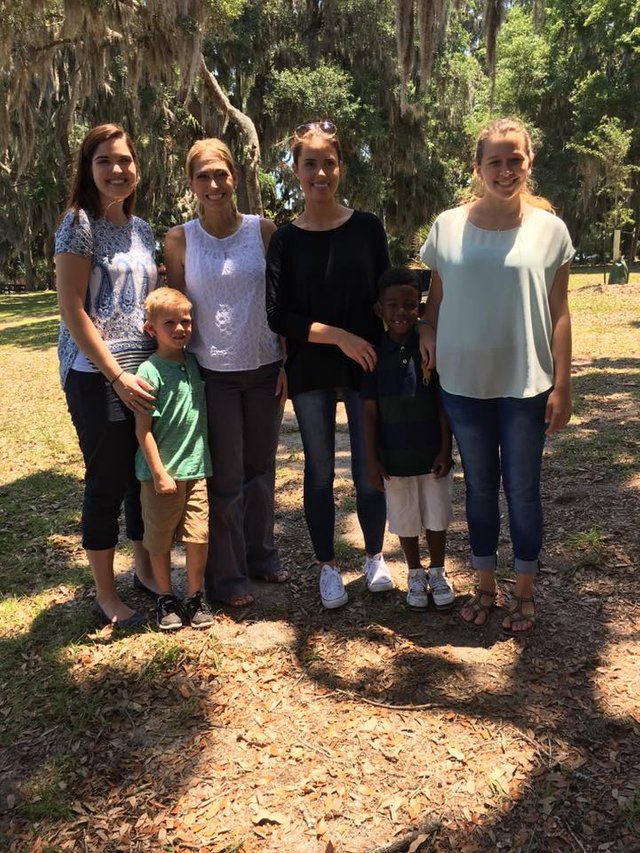

After volunteering over 100 hours at an Auditory/Oral Deaf Preschool in Savannah, GA I was asked to work as a para-professional for the following school year. This program takes kids starting at age 2 that are born deaf or hard-of-hearing and have been implanted with a cochlear implant or aided with hearing aids. To the contrary that many people think, we do not use sign language; all of the children use spoken language. We had a maximum of 8 students aged 2-6. The purpose of the preschool is to get the children "kindergarten-ready" with their hearing peers. These children learn to listen and speak language at the school. We have had several students graduate from the program and are thriving in a regular education setting.
A cochlear implant is a surgically implanted device that helps overcome problems in the inner ear, or cochlea. The cochlea is a snail-shaped, curled tube located in the area of the ear where nerves are contained. Its function is to gather electrical signals from sound vibrations and transmit them to your auditory nerve (or hearing nerve). The hearing nerve then sends these signals to the brain, where they're translated into recognizable sounds.
If important parts of the cochlea aren't working properly and the hearing nerve isn't being stimulated, there's no way for the electrical signals to get to the brain. Therefore, hearing doesn't occur. (Sometimes referred to as nerve deafness, this is called sensorineural hearing loss.) By completely bypassing the damaged part of the cochlea, the cochlear implant uses its own electrical signals to stimulate the auditory nerve, allowing the person to hear.
Although they're not miracle devices, cochlear implants help some children and adults, whether they're born deaf or whether hearing loss occurs later in life, experience talking on the phone, listening to music, and hearing the voices of their friends and loved ones.
These were my two oldest boys at the school singing me happy birthday. Ten years ago it was unheard of that kids born deaf could hear and speak. These boys stole my heart with the love and determination they showed when learning how to communicate. They graduated the program and will be starting kindergarten this August. I am so thankful that I had the privilege to teach them! I cannot imagine wanting to tell someone something, but not knowing how to communicate it, these boys will flourish and not have to worry about miscommunication either! I hope the video warms your heart like it continues to warm mine!
@smooth @smooth.witness @recursive2 @hedge-x @recursive3
Downvoting a post can decrease pending rewards and make it less visible. Common reasons:
Submit
i love what you do
Downvoting a post can decrease pending rewards and make it less visible. Common reasons:
Submit
Two paragraphs are from an external source. Here's a suggestion on how to format it. Or you could just user "quotes" and put the link to the source at the bottom.
Thank You! ☙
Downvoting a post can decrease pending rewards and make it less visible. Common reasons:
Submit
Wond
Downvoting a post can decrease pending rewards and make it less visible. Common reasons:
Submit